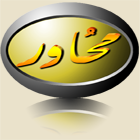المثال الثامن : اقتباس نص مزمور 89: 9-10 و مزمور 65 : 7 و مزمور 93 : 3 .
نقرا من مزمور 89 :
6.لأَنَّهُ مَنْ فِي السَّمَاءِ يُعَادِلُ الرَّبَّ. مَنْ يُشْبِهُ الرَّبَّ بَيْنَ أَبْنَاءِ اللهِ؟
7 إِلهٌ مَهُوبٌ جِدًّا فِي مُؤَامَرَةِ الْقِدِّيسِينَ، وَمَخُوفٌ عِنْدَ جَمِيعِ الَّذِينَ حَوْلَهُ.
8 يَا رَبُّ إِلهَ الْجُنُودِ، مَنْ مِثْلُكَ ؟ قَوِيٌّ، رَبٌّ، وَحَقُّكَ مِنْ حَوْلِكَ.
9 أَنْتَ مُتَسَلِّطٌ عَلَى كِبْرِيَاءِ الْبَحْرِ. عِنْدَ ارْتِفَاعِ لُجَجِهِ أَنْتَ تُسَكِّنُهَا.
10 أَنْتَ سَحَقْتَ رَهَبَ مِثْلَ الْقَتِيلِ. بِذِرَاعِ قُوَّتِكَ بَدَّدْتَ أَعْدَاءَكَ.
و نقرا من مزمور 65 :
7 الْمُهْدِّئُ عَجِيجَ الْبِحَارِ، عَجِيجَ أَمْوَاجِهَا، وَضَجِيجَ الأُمَمِ.
و نقرا من مزمور 93:
3 رَفَعَتِ الأَنْهَارُ يَا رَبُّ، رَفَعَتِ الأَنْهَارُ صَوْتَهَا. تَرْفَعُ الأَنْهَارُ عَجِيجَهَا.
اقول : النصوص السابقة تقتبس الفكرة المتداولة لدى شعوب لشرق الادنى القديم الا و هي وجود البحار و الانهار في حالة اضطراب دائم و هذا تجسيد للتفكير القديم الذي يرى المياه و اليابسة في حالة صراع دائم . و نجد في النصوص الاوغاريتية انتصار الاله الوثني بعل الممثل باله الرياح على الاله الوثني يم الممثل باله البحار بعد صراع.
و كذلك نجد في المزمور 89 اقتباسين مهمين :
1. العدد العاشر يمثل انتصار الرب على رهب و يعتقد انه مخلوق اسطوري انتصر عليه الرب قبل خلق الكون و هذا بحد ذاته مقتبس من القصص الاسطورية المتداولة بين شعوب الشرق الادنى في ذلك الوقت من انتصار الهتهم و طواغيتهم على بعض الكائنات الاسطورية قبل او في بداية خلق الكون .
2. العددان السادس و السابع يمثلان وجود الرب بين مجمع الالهة حيث يمجد النص يهوه فوق بقية الالهة من ابناء الله !!
نقرا من The IVP Bible Background Commentary: Old Testament الصفحة 545 :
(( 89:7. council of the holy ones. In the ancient Near East the major decisions were all made in the divine council. There the gods would consult with one another and share their information and opinions. The familiar picture of a heavenly throne surrounded by the divine assembly is well known from the Ugaritic texts (most notably the epic of Keret), though this Canaanite council is made up of the gods of the pantheon. Examples occur also in the tenthcentury building inscription of Yehimilk from Byblos and the Karatepe stele of Azitawadda. In the Akkadian Enuma Elish it is the assembly of the gods that appoints Marduk as their head. Fifty gods made up this assembly with seven in the inner council. In Israelite belief the gods were replaced by angels or spirits—the sons of God or the heavenly host.
89:9. rule over the surging sea. In the Bible as well as in the ancient Near East the sea represents chaos and disorder, as do the sea monsters that live there. The obvious physical struggle between the sea and the land as well as the fierce, seemingly unstoppable energy displayed by the savage sea gave rise to cosmic myths in the ancient Near East. The Enuma Elish creation epic from Babylon describes how Marduk vanquishes Tiamat while this goddess of watery chaos is in the form of a dragon. Much of the cycle of stories about Baal in Ugaritic legend involves Baal’s struggle against his rival Yamm, the god of the sea. Similarly, the Ugaritic epic has both Anat and Baal claim to have conquered Litan, the seven-headed dragon, and thus gained mastery over the seas. Rule over the sea then concerns Yahweh’s sovereign control over the chaotic forces that were thought to constantly threaten the cosmos. That rule is expressed by the calming of the sea (see comments on 65:7 and 107:29).
89:10. Rahab. Rahab is described as one of the sea monsters slain by God (see Job 26:12 and Is 51:9). In both the Babylonian and the Ugaritic myths of creation the champion deity (Marduk in Babylon and Baal in Ugarit) fights and slays a sea monster and its cohorts in a manner similar to that of Yahweh. In other contexts, Rahab is symbolically used as a designation for Egypt (Is 30:7 and Ps 87:4). The name Rahab has not yet been found in extrabiblical sources))
file:///Users/MacbookPro/Downloads/Bible_Background_Commentary--Old_Testame%20(6).pdf
و نقرا من الصفحة The eschatologization of the divine conflict with the dragon and the sea الفصل الرابع God's conflict with the dragon and the sea لجون داي الفصل الرابع الصفحة 162 :
((Yam (CTA 2.IV.32 = KTU 1.2.IV.32), and Baal is also credited with defeating the seven-headed sea monster Leviathan (CTA 5.I.1-3 = KTU 1.5.I.1-3), who appears to have been an associate of Yam (cf. CTA 3.IIID.35-9 = KTU 1.3.III.38-42). In this connection it is interesting to note that Rev. 12:3, 13:1 and 17:3 actually credit the ten-horned dragon and beast (both reflecting the fourth beast of Dan. 7) with seven heads. There are a number of passages in the Old Testament which allude to God’s battle with the sea monster (e.g. Is. 27:1; Job 26:12-13; Ps. 74:13-14, 89:10f., ET 9f.) which have been considered above, and from a number of expressions used (Leviathan, twisting serpent, crooked serpent) it is clear that it is Canaanite mythology rather than, say, the Babylonian myth of Marduk and Tiamat (as Gunkel thought and as some scholars still erroneously suppose) which underlies these Old Testament references (cf. above. Chapter I).59 When in Dan. 7 we find God in opposition to sea monsters, we are therefore led to postulate an ultimate Canaanite myth there also))
https://jbburnett.com/resources/day_...ict-dragon.pdf
هذا وصلى الله على سيدنا محمد و على اله وصحبه وسلم
يتبع










 رد مع اقتباس
رد مع اقتباس


المفضلات